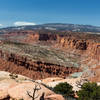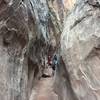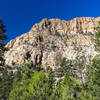
Land Manager: NPS - Capitol Reef National Park
 Navajo Knobs Out and Back
Navajo Knobs Out and Back
9.2 mi 14.9 km • 1,892' Up 576.78 m Up • 1,892' Down 576.77 m Down




 Loa, UT
Loa, UT
 Strike Valley Overlook and Upper Muley Twist Canyon
Strike Valley Overlook and Upper Muley Twist Canyon
15.8 mi 25.4 km • 1,344' Up 409.68 m Up • 1,344' Down 409.61 m Down




 Escalante, UT
Escalante, UT
 Ding & Dang Loop
Ding & Dang Loop
6.0 mi 9.7 km • 918' Up 279.8 m Up • 918' Down 279.77 m Down




 Ferron, UT
Ferron, UT
 Little Wildhorse and Bell Canyon Loop
Little Wildhorse and Bell Canyon Loop
8.7 mi 13.9 km • 871' Up 265.62 m Up • 871' Down 265.58 m Down




 Ferron, UT
Ferron, UT
 Fish Lake Loop
Fish Lake Loop
17.1 mi 27.6 km • 1,815' Up 553.3 m Up • 1,809' Down 551.46 m Down




 Loa, UT
Loa, UT
 The Box Trail
The Box Trail
8.9 mi 14.4 km • 1,725' Up 525.81 m Up • 363' Down 110.57 m Down




 Escalante, UT
Escalante, UT






0 Comments